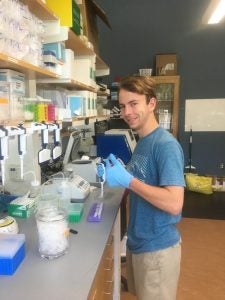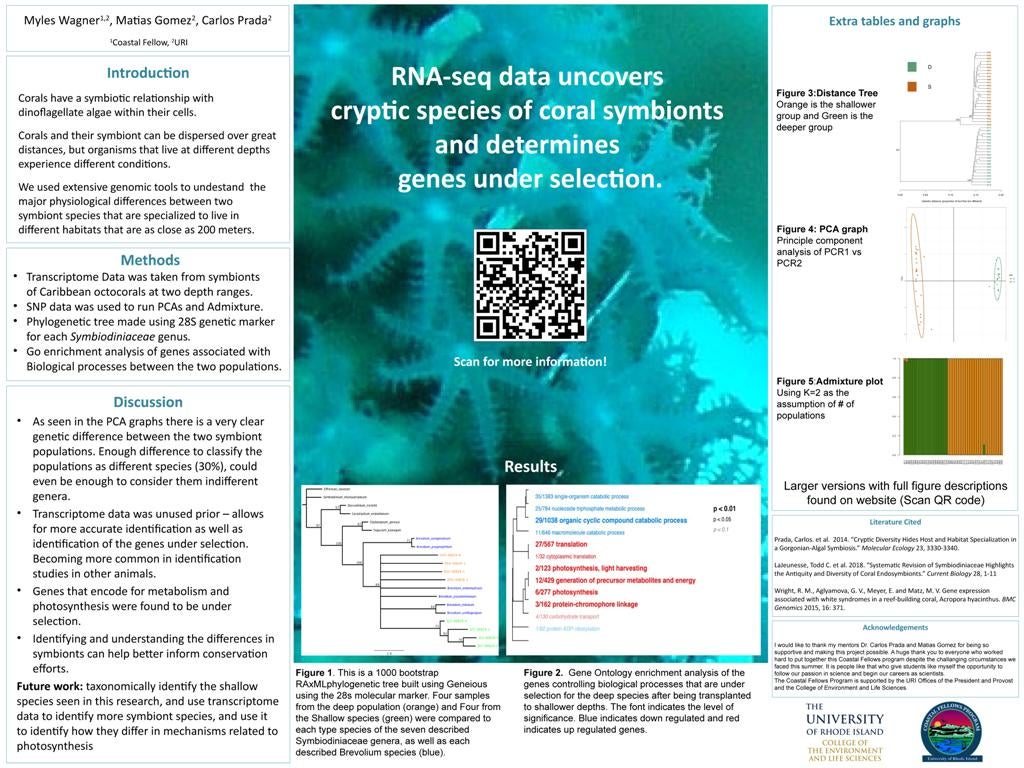RNA-seq data uncovers cryptic species of coral symbionts and determines genes under selection
Abstract:
Corals and dinoflagellate algae have a symbiotic relationship. Although there is tremendous diversity within corals, until recently all coral symbionts were classified as a single genus called Symbiodinium. Now, it is well documented that there are at least six genera besides Symbiodinium. Our lab has been studying one of them, the genus Brevolium, which is a common coral symbiont in Caribbean waters. A study on the difference in two populations of Eunicea coral in the Caribbean found evidence that suggested the symbiont populations differed genetically across a depth gradient. We analyzed genome-wide SNPs and determined that the two populations did in fact show a clear genetic difference, and that this genetic difference could be great enough to distinguish them as different species of Brevolium. When using molecular markers to compare our samples to the larger Brevolium and Symbiodinacea group, the deeper population fit in with other Brevolium species, but the shallower species was significantly different from the described Brevolium species, indicating that the shallow population could be an undescribed Brevolium species. Furthermore, a Gene Ontology analysis of the genes under selection between the two potential species showed that the biological processes most selected for were related to metabolism and photosynthesis. This study showcases a previously untested method of using genome-wide SNP analyses to distinguish between Brevolium species. This analysis method highlights the utility of genome-wide markers for future studies on coral symbionts to uncover their true diversity.
 Home
Home Browse
Browse Close
Close Events
Events Maps
Maps Email
Email Brightspace
Brightspace eCampus
eCampus




